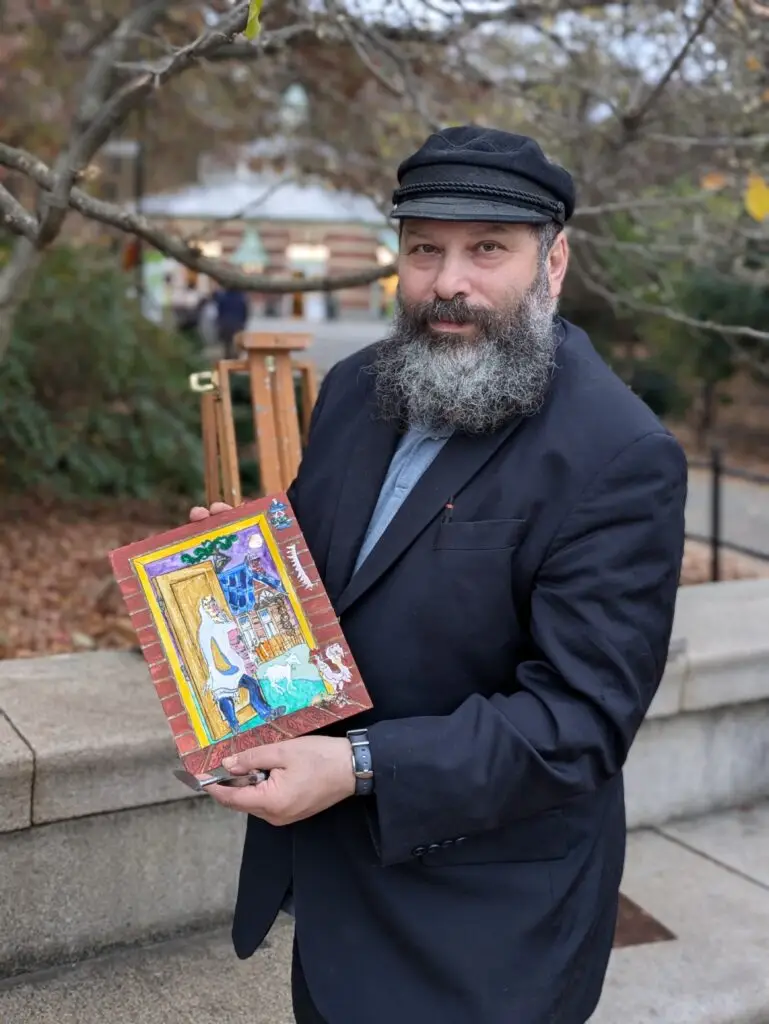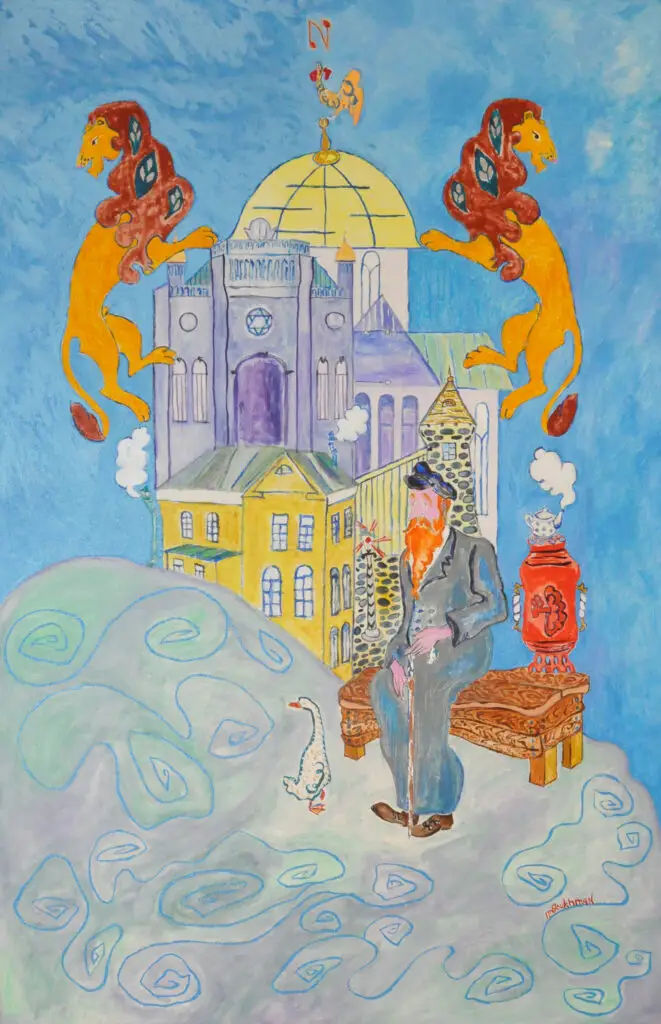When I was seven years old, my father, an artist himself, brought me to a ceramic studio for the very first time. I had a severe stutter as a child, and this early exposure to my craft taught me a whole new way to communicate with the world around me. Later in life, I encountered folk art in the form of my grandmother’s heirloom 19th-century Judaica pieces, which depicted old homes, nature, and mythical beasts. I was further inspired by the work of Grandma Moses, because her unique style resonated with me and helped shape the way I imbued my paintings of the long-ago shtetl with warmth.
My final influence happened almost by accident; my background in sculpture and ceramics gave me the opportunity to study with the sculptor Lavinsky, who was the great artist Mayakovksy’s son. Lavinsky’s studio was where I experienced Russian futurism first-hand, and saw Miakhovsky’s poetry performed, which taught me how to look at the world around me with both a poet’s and a painter’s eyes.
My art absorbed those influences to form a unique window into a magical Jewish folk world filled with mythical birds, fish, unicorns, swans, lions and of course, the everyday people who coexist with the Divine in the melody of nuances inherent in traditional Jewish life. Using traditional oil and canvas, I express my inner world – one that is a reflection of a time and place that has been destroyed, but lives on in a beautiful culture that survives despite persecution, repression, and Soviet ideology.

